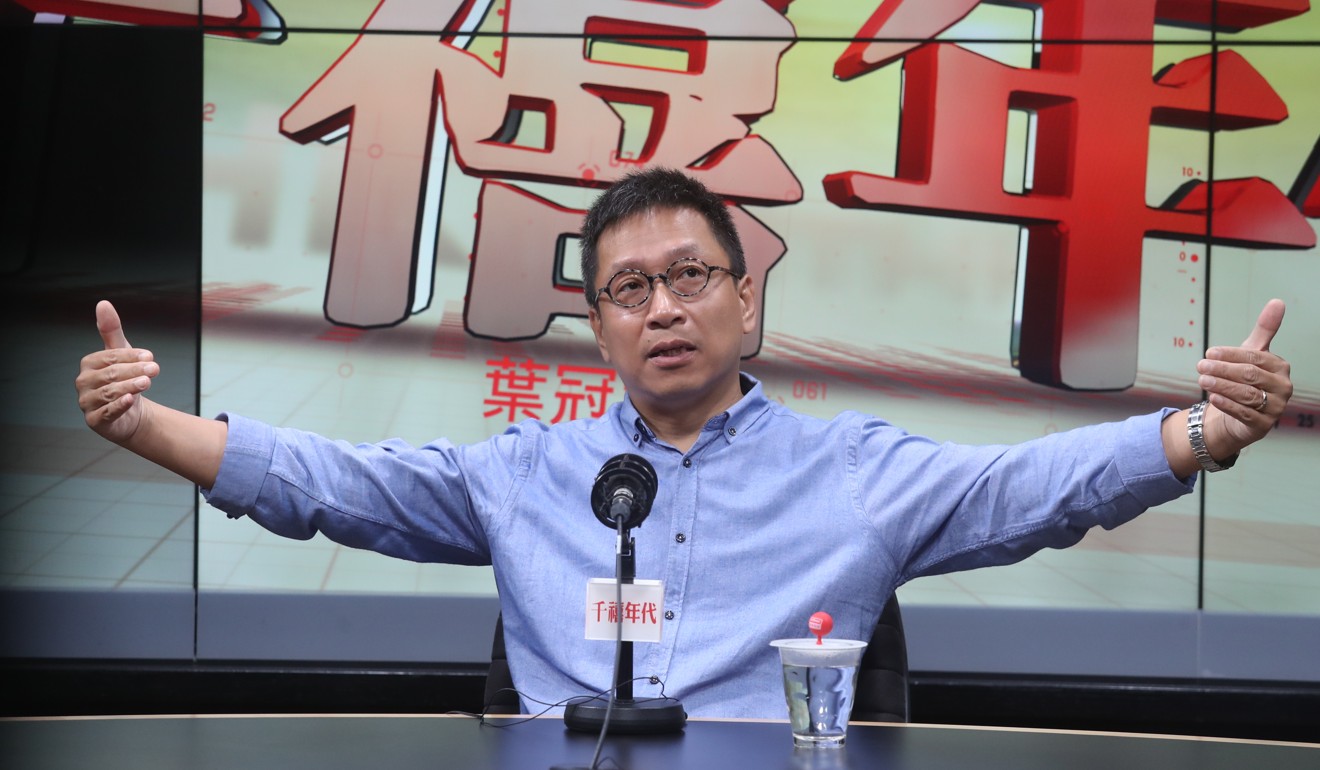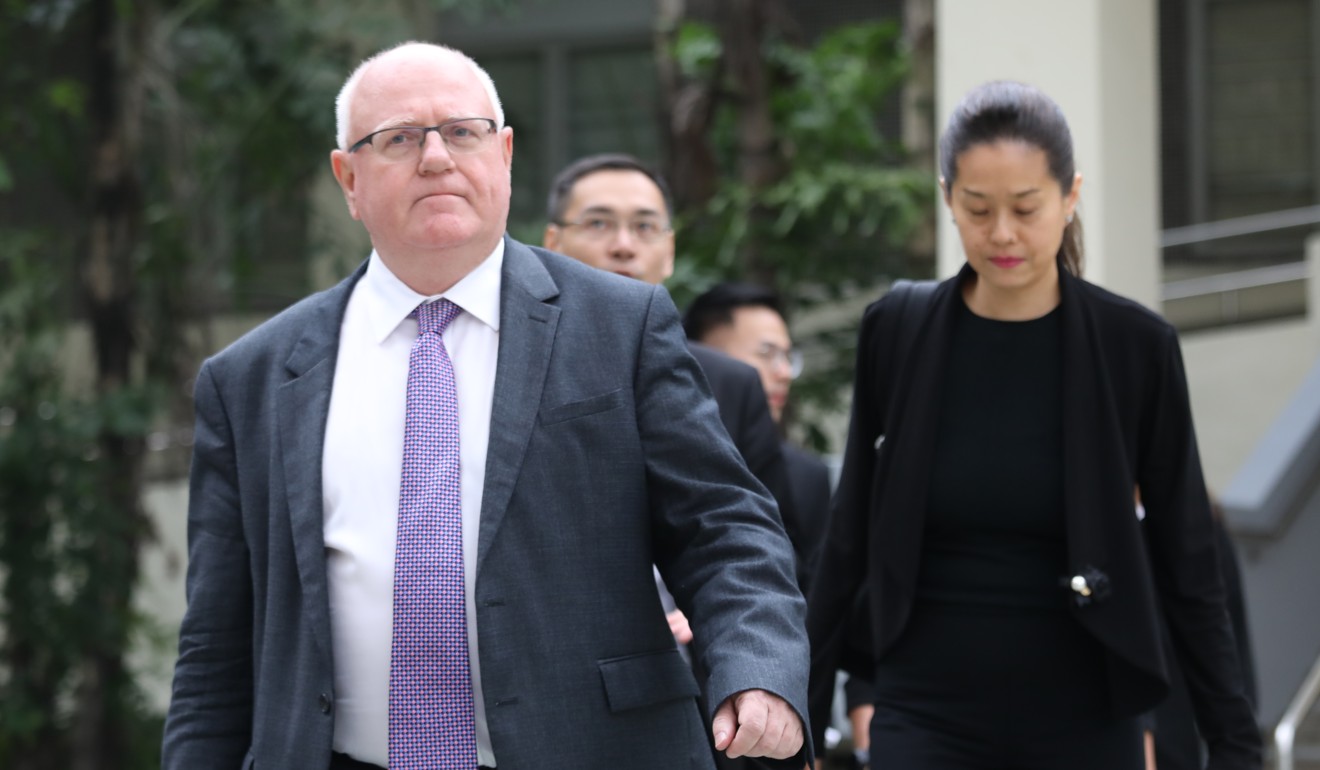
Inquiry into shoddy work on Hong Kong’s most expensive rail project hears fresh allegations from whistle-blower, who claims station was not earthquake tested
- Jason Poon tells commission of inquiry more than 30,000 rebar connections were defective
- Managing director of subcontractor China Technology Corporation also says he saw no torque meter used to properly maintain tensile strength of bars
The whistle-blower on a construction scandal involving Hong Kong’s most expensive rail project has made fresh allegations about shoddy work on a station platform.
Appearing at the commission of inquiry investigating shoddy work on the HK$97.1 billion (US$12.3 billion) Sha Tin-Central link, Jason Poon Chuk-hung claimed more than 30,000 rebar connections were defective, in addition to about 1,000 faulty steel bars.
Poon, the managing director of subcontractor China Technology Corporation, was hired by main contractor Leighton Contractors (Asia) to do concreting work at Hung Hom station.
Leighton is embroiled in allegations that steel bars were cut short to fake proper installation into couplers on the platform, and supporting diaphragm walls were changed without authorisation.

Commission counsel Ian Pennicott SC, QC asked Poon why he stated in an email to Leighton operations manager Anthony Zervaas in September 2017 that the number of substandard bars exceeded 30,000, yet in his witness statement he estimated more than 1,000 bars had been cut.
Poon clarified that 30,000 referred to “suspected defective rebar connections” on diaphragm walls concerning the whole site, not just the new platform.
He said that since the station structure needed to withstand an earthquake, a torque meter should be used to install rebars for “crimping” to maintain their tensile strength. He did not see such a machine and suspected workers only screwed the bars into couplers manually, undermining their ductility.
“The torque test is to ensure and secure proper installation of the threaded bars onto the couplers,” Poon said.
Sha Tin-Central link whistle-blower accuses main contractor of colluding with MTR to fool public
Pennicott presented a statement from the coupler supplier BOSA that said “no special torque amount is required” and questioned whether Poon made up his allegation.
“You can ask the bar-fixing trade association which couplers don’t require torque installation … I don’t think the BOSA catalogue is reliable,” Poon said.
Inquiry chairman Michael Hartmann, a former non-permanent judge on Hong Kong’s top court, asked whether the only safety issue would be the 1,000 cut rebars if experts proved no particular torque was required.

Poon insisted there were still safety concerns and that all shoddy work needed perspective.
“The issue cannot be isolated to bar-cutting alone. Other couplers have fallen off … This is just one [of many] structural safety issues. We can’t just look at one area.”
He also denied suggestions he used the issue to exert pressure on Leighton into settling a commercial dispute worth more than HK$17 million.
“The thing we care about is not money, but responsibility over this project,” he said.
“Up to now, Leighton owes us about HK$30 million. If I was really so desperate for money, I could have approached the MTR Corporation for payment to Leighton so Leighton could pay back the money to us. It would have been more effective in chasing up the payment, and I wouldn’t have wasted so much time writing long emails to Leighton.”
Tempers flare at Sha Tin-Central rail link inquiry as whistle-blower tries to introduce new evidence
Poon added that in September 2017, he signed a confidential agreement with Leighton as the firm promised to repay the money in phases and conduct remedial measures at the site. Due to the agreement requirements, he deleted a substantial number of photos related to bar-cutting on his computer.
Hartmann challenged how he could so easily destroy crucial photos that could prove criminal acts. Poon said the real evidence remained at the site, and nobody could destroy it.
“All the facts are inside the structure of the station. No one could hide anything there. It doesn’t matter if I have thousands of photos, Leighton could still come up with more excuses to dismiss them.”
The hearing continues on Thursday.

